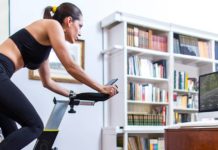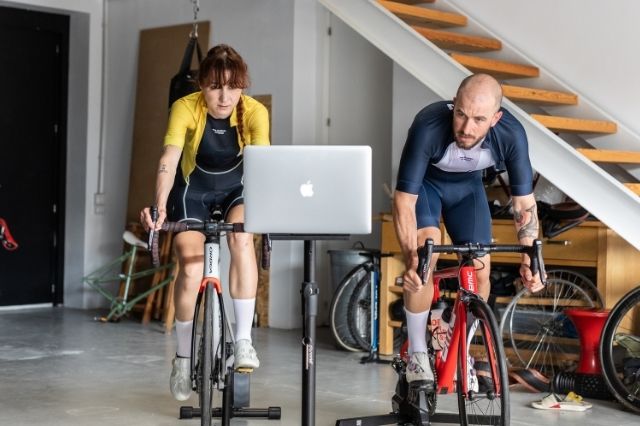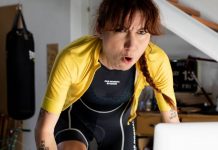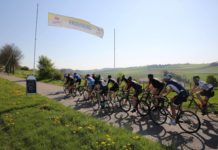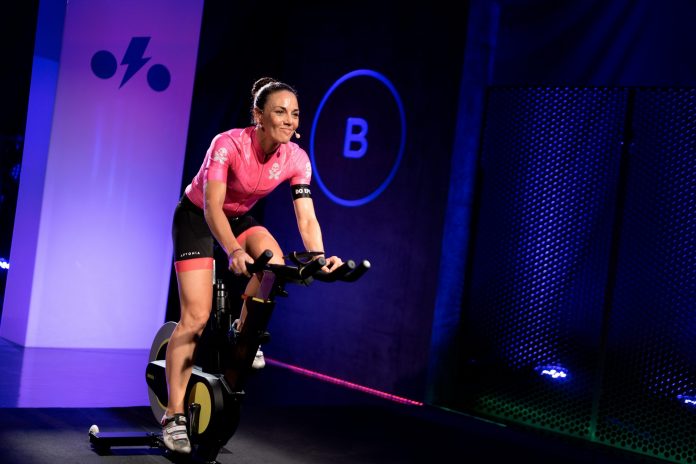We know we are not objective, but BKOOL Fitness is one of the most versatile options you can have when it comes to indoor cycling. And the one that can give you the most joy when it comes to improving your physical condition. Its greatest advantage lies in the fact that an instructor will accompany you throughout the training, telling you how hard you have to go and how many pedal strokes per minute.
In practical terms, BKOOL Fitness is like going to a gym class without having to leave your home. If you are planning to start using it, we are going to give you some pieces of advice so that you can get the most out of your exercise.
Power
The key factor that we are going to work on in a BKOOL Fitness session is the power that we apply when we press on the pedal.
Power is the perfect unit for measuring cycling performance and pedalling technique. Training by power allows you to perfectly control the watts you move and the time you can last at that load volume to define your optimal training zones.
The advantages of training by power are:
Saving effort
When applying stimuli close to the threshold zone and purely anaerobic ones, you will have no problem as you will reach the desired watts with much sooner than if you controlled your training by pulse. It will allow you to be more efficient and save these efforts for another interval.
Data collection
Power provides data that allows you to objectively evaluate your training sessions: strengths, weaknesses, qualities to focus on, progress, etc.
Helps you to manage your efforts
Training by power is perfect for controlling effort and being able to give maximum performance without fear of poor recovery. And we go beyond cycling: if, for example, you do triathlons, training in BKOOL Fitness and by power will help you to control exactly the intensity at which you can ride in order to be able to complete the rest of the events.
Tailor-made training loads
Power also quantifies the stress to which the body is subjected, which prevents overtraining.
Not affected by external factors
Power is the work developed based solely on the force applied to the pedals and cadence. No other factors are involved.
At what cadence should you train?
According to science, pedalling fast at low speed causes a waste of energy when you finish training. When pedalling at the wrong cadence, most of the effort goes into moving your legs up and down, but not into going the distance.
Therefore, to maximise power in BKOOL Fitness training, choose a cadence that allows the muscles to contract at one third of maximum speed, which will also have an impact on muscular efficiency.
Maintaining a good cadence allows for a better and greater flow of oxygen, which in turn produces more efficient energy in the mitochondria. The pedalling speed is an important determining factor of VO2 during practice.
The optimal cadence would therefore be between 90 and 100 pedal strokes per minute on flat terrain and between 80 and 95 on uphill terrain. However, the type of bike and type of exercise makes it difficult to determine a specific cadence.
What position should you stand in on the bike?
As we all know, there are five positions on the bike, whether we are outdoors or indoors: both hands on the handlebars, both feet on the pedals and the pelvis on the saddle. It is very important to perform the exercises while maintaining a comfortable position at all these points.
Training in the wrong position can cause physical problems, as well as affecting pedalling efficiency. That’s why the adjustments for a good training position on Bkool Fitness are:
Seat height
The saddle must be at the intersection of the femur and the hip. To confirm that it is the right height, try pedalling: if your foot does not lose contact with the pedal and at its lowest point your leg is extended, it is at the right height.
Handlebar adjustment
The handlebars must be at the same height as the saddle. If you are a beginner or suffer from physical problems, it is advisable to opt for a slightly higher height. The arms should be in a comfortable and dynamic position, not fully extended.
Horizontal saddle adjustment
When pushing down, while the pedal is at 3 o’clock, check that the central pin of the pedal is aligned with the front of the knee.
As for standing or sitting, it all depends on the moment and your physical condition. Standing provides more power and speed, but getting out of the saddle requires mobilising the upper body and stabilising the core.
Standing places a greater demand on the upper body, which can eventually cause fatigue and force you to sit down, losing speed and power.
